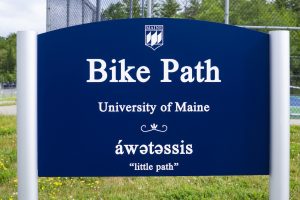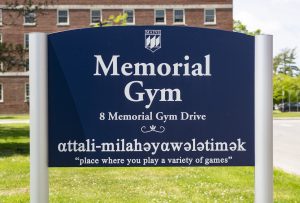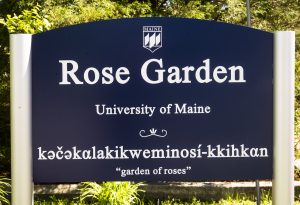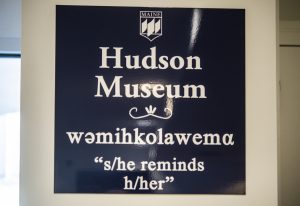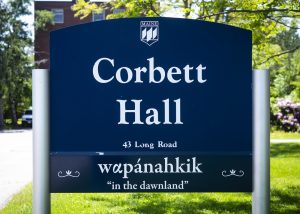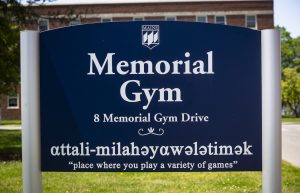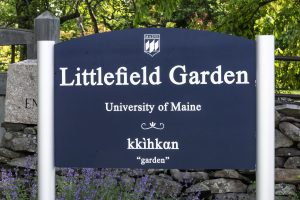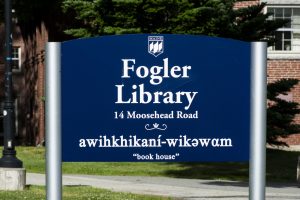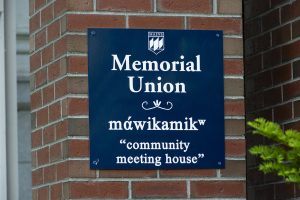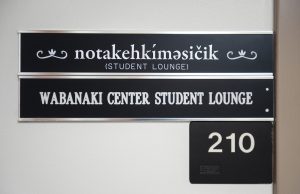Signage
Penobscot Language Signage
The University of Maine
The Signage project builds on conversations that have developed over the last few years in the Wabanaki Center and Wabanaki communities in the State of Maine regarding the relative invisibility of Indigenous people, history, and languages at the University of Maine to foster reconciliation by sharing about Penobscot language, values, and people 1 to restore meaning and knowledge.
Bilingual English and Penobscot language signage will foster an awareness of the presence of multiple, living languages.
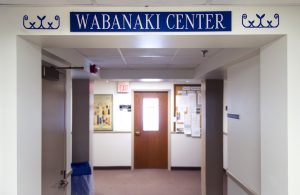
SIGNAGE COMMITTEE MAY 2018
Dr. Darren J. Ranco, Committee Chair, Chair of Native American Programs and Coordinator of Native American Research at University of Maine (Penobscot Nation)
Carol Dana, Penobscot Language Master, Penobscot Cultural & Historic Preservation (Penobscot Nation and UMaine Class of 1990 and M.Ed. 2008)
James Eric Francis, Sr., Director of Penobscot Cultural & Historic Preservation and Tribal Historian for Penobscot Nation (Penobscot Nation and UMaine Class of 2003)
Gabriel Paul, Language Instructor, Penobscot Cultural & Historic Preservation (Penobscot Nation and UMaine Class of 2007)
Dr. Margaret W. Pearce, Faculty Associate, Canadian-American Center, University of Maine (Citizen Potawatomi Nation)
Claudia Cummings, Student at University of Maine (Penobscot Nation and UMaine Class of 2020) Shantel Neptune, Student at University of Maine (Penobscot Nation and UMaine Class of 2019)
The final Plan for Penobscot Language Signage was approved by the Committee during the week of May 7, 2018.
Signs restore and correct:
⁃ Penobscot words
⁃ Penobscot spellings
Signs show respect for:
⁃ language
⁃ values
⁃ people
Signs restore meaning and knowledge:
⁃ historical
⁃ cultural
Signs raise awareness:
⁃ geographical
⁃ political
⁃ to foster reconciliation
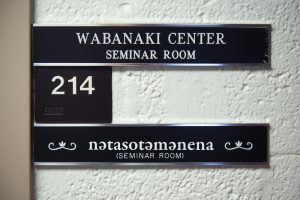
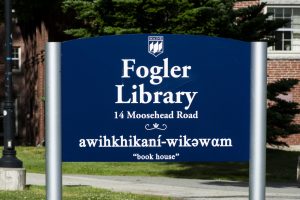
English/Penobscot sign at UMaine’s Fogler Library: awihkhikaní-wikəwαm.
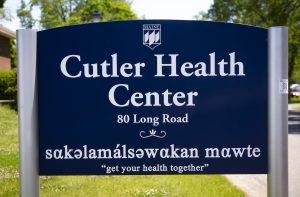
English/Penobscot sign at UMaine’s campus Health Center: sαkəlama’lsəwαkan mαwte.
